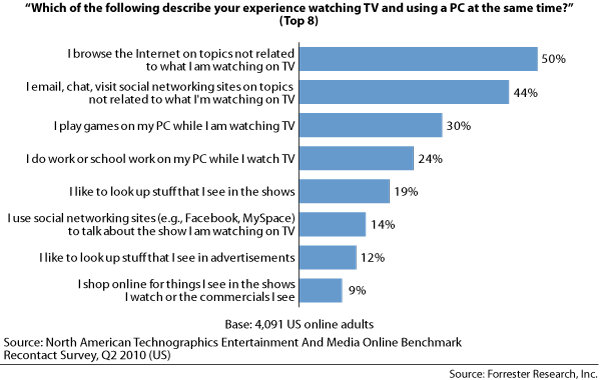The Data Digest: What Are People Using Their PC For While Watching TV?
Many people consume content from multiple media channels simultaneously (see for example this recent post on European youth), but does the content they’re looking at actually overlap? We looked into our Technographics® data to see what consumers are doing on their computers while watching a TV show and we found that the top four activities have nothing to do with what they are watching.
Because consumers are using their PC for activities that require more attention than watching TV – which is mostly a passive activity — it’s questionable how much of the TV content they are even registering. Almost one-third of consumers are playing games on their computers while watching television, and one-quarter are doing schoolwork. Has the TV just become background noise?

We also see that 44% of consumers are communicating with friends via social networks, chat, and email on topics that are not related to the show. So consumers are interested in content online, but not necessarily in parallel with the broadcasting of a show. Market researchers need to develop a research plan that helps companies understand how and when consumers watch TV, and when they are checking out online content related to the company's products or brand, in order to build a marketing strategy that reinforces the message across channels.